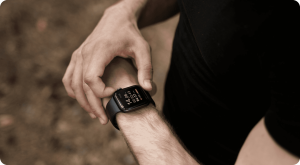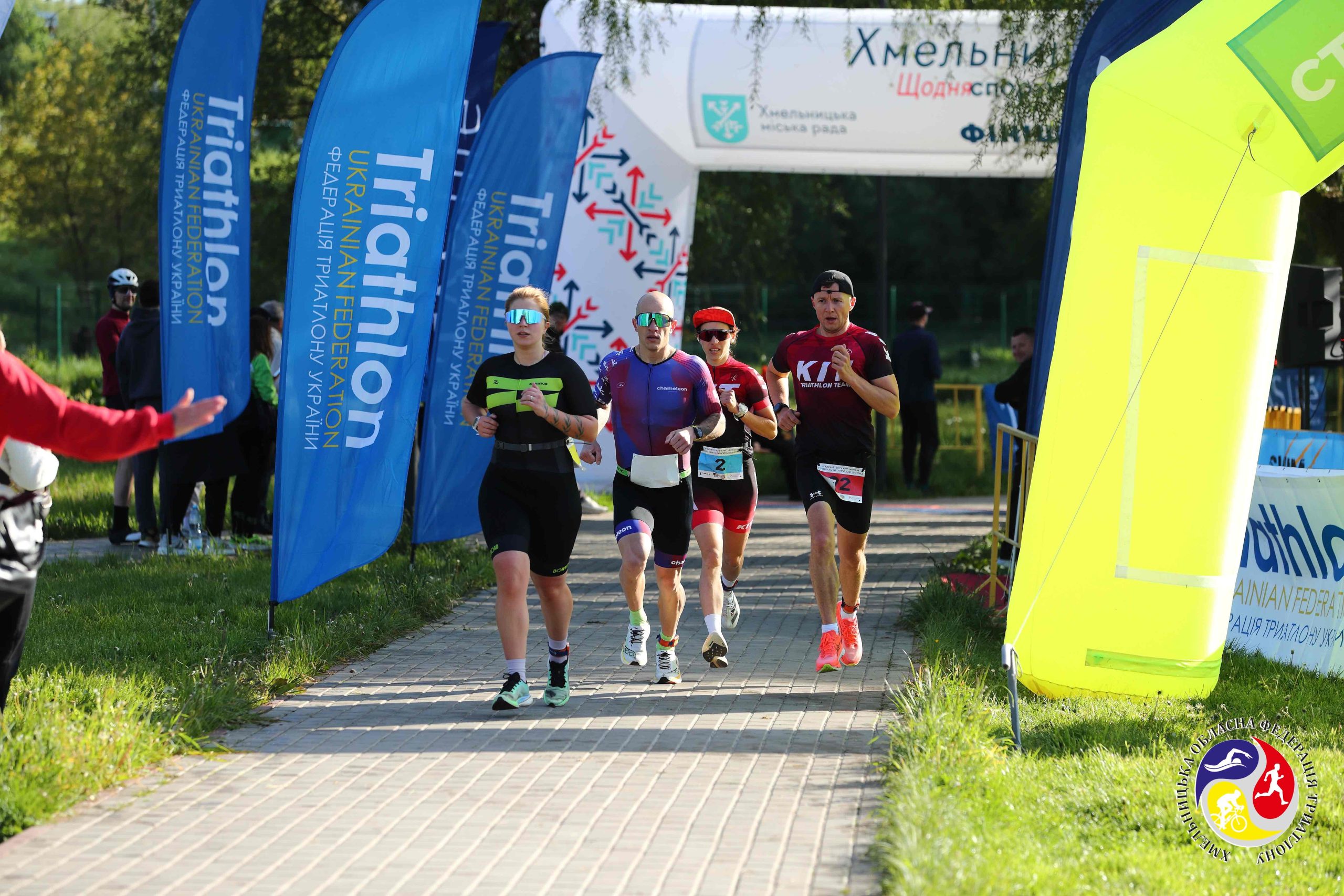Heart Rate Variability (HRV) serves as a pivotal physiological metric for evaluating the dynamic nature of an individual’s heart rate.
Contrary to the misconception of a steady heart rate for an athlete, HRV represents the body’s adaptability and resilience to various internal and external stressors.
What is Heart Rate Variability (HRV)?
Average HRV for athletes is a measure of the subtle variations in the time intervals between consecutive heartbeats.
It reflects the adaptability and responsiveness of your autonomic nervous system (ANS), which controls involuntary functions like heart rate, digestion, and breathing.
A higher HRV typically suggests a more adaptable and resilient system capable of efficiently adjusting to changing circumstances.
Why Is HRV Important for Triathletes?
Triathletes endure intense physical demands, pushing their bodies to the limits.
Heart rate for an athlete offers a valuable window into their overall health and fitness, allowing them to:
1. Monitor overtraining
Early detection of fatigue and stress levels helps prevent injuries and burnout.
2. Optimize training
Individualized training plans based on HRV data lead to better performance and quicker recovery.
3. Improve sleep quality
Understanding the relationship between sleep and HRV facilitates adjustments for improved sleep hygiene.
4. Manage stress
Monitoring an athlete’s heart rate provides insights into stress levels and helps develop effective coping mechanisms.
By assessing HRV, triathletes can fine-tune their workouts, prevent overtraining, and optimize their performance potential.

What Is a Good Athlete Resting Heart Rate?
A typical resting heart rate for athletes can vary significantly based on factors such as age, fitness level, genetics, and individual physiology.
In general, lower resting heart beats often indicate a more efficient cardiovascular system and better aerobic fitness.
1. Age
As a general rule, the heart rate of athletes tends to decrease with age.
For example, a young athlete might have an RHR in the 40s, while an older athlete might have an RHR in the low 60s.
2. Gender
Women typically have slightly higher resting heart rates than men.
3. Type of athlete
Endurance athletes, such as runners, cyclists, and swimmers, typically have lower resting heart rates than athletes in other sports.
This is because endurance training strengthens the heart and improves its efficiency.
4. Overall fitness level
Your fitness level is also one of the factors that affect resting heart rate.
Athletes with higher fitness levels generally have lower resting heart rates.
Here’s a general guideline.
- The normal heart rate for an athlete is 60 to 100 beats per minute (bpm).
- A resting heart rate below 60 bpm is normal, and some elite athletes may even have an RHR in the 30s or 40s.
It’s important to note that these are just general guidelines.
The best way to determine a good resting heart rate for you is to talk to your doctor and track your own RHR over time.

The Benefits of Monitoring HRV
Triathletes who push their bodies to peak performance can reap significant benefits from monitoring normal heart rates for athletes.
Here’s how:
Personalized Training Optimization
HRV data allows for individualized training programs tailored to your unique needs.
By understanding your baseline HRV and its response to training, you can target a training zone that maximizes adaptation and minimizes the risk of overtraining.
Also, you should avoid setting unrealistic goals, avoid abnormal heart rhythm, and optimize recovery between workouts, and prevent injuries.
Early Detection of Overtraining
HRV acts as an early warning system for overtraining, a common issue among athletes.
By tracking your HRV response to training, you can:
1. Recognize early signs of fatigue and stress before they become detrimental.
2. Take timely interventions like rest or reduced training intensity to prevent injuries.
3. Avoid performance plateaus and potential declines associated with overtraining.

Improved Sleep Quality
Sleep plays a crucial role in the recovery and performance of triathletes.
Monitoring normal heart rate for endurance athletes can help:
1. Recognize poor sleep patterns that negatively impact HRV and performance.
2. Implement strategies like regular sleep schedules and relaxation techniques to improve sleep quality.
3. Enhance recovery by ensuring optimal sleep quality, leading to better performance and adaptation to training.
Effective Stress Management
Stress, both mental and physical, significantly affects HRV.
By monitoring HRV, you can:
1. Understand how stress impacts your overall health and well-being.
2. Identify and implement effective strategies to manage stress and its negative effects while staying physically active.
3. Enhance mental well-being, improving focus, motivation, and overall performance.
By monitoring the average HRV for athletes and understanding its fluctuations, triathletes can unlock a wealth of information about their training, recovery, and overall health.
Factors Influencing Normal Resting Heart Rate
While HRV offers valuable insights, it’s crucial to understand the various factors that influence it.
These influences interact and contribute to overall HRV readings, making personalized interpretation essential.
Here’s a detailed look at each factor:
1. Exercise intensity
The demands placed upon your body during workout sessions significantly influence your HRV.
High-intensity training can lead to a temporary decrease in HRV, while moderate-intensity exercises often stimulate an increase.
The sheer volume of training also plays a role, with excessive training potentially leading to overtraining and a corresponding decrease in HRV.
However, adequate recovery periods interspersed between training cycles allow your HRV to rebound and return to its baseline level.
2. Sleep
The quality and quantity of sleep you experience profoundly impact your HRV.
Poor sleep quality, characterized by sleep apnea, insomnia, and other symptoms, can significantly decrease your HRV and hinder your recovery and performance. Check out these post-workout insomnia remedies for effective tips.
Similarly, insufficient sleep duration disrupts your body’s natural rhythm and negatively impacts HRV.
Prioritizing quality sleep and ensuring adequate sleep duration each night becomes essential for optimal normal heart rate for an athlete’s readings and overall well-being.
3. Nutrition
The fuel you provide your body with plays a crucial role in its functioning and, consequently, your HRV.
A balanced diet rich in fruits, vegetables, and whole grains provides the body with the triathlon nutrition it needs to maintain optimal HRV.
Conversely, unhealthy dietary patterns deficient in essential vitamins and minerals can negatively impact HRV and hinder your performance.
Additionally, proper hydration plays a key role in supporting healthy HRV levels.
Dehydration can lead to a decrease in HRV, emphasizing the importance of maintaining adequate fluid intake throughout the day, especially for athletes engaged in strenuous training.
4. Stress
Both mental and physical stress can significantly impact your HRV.
Chronic stress, whether from work, relationships, or finances, can lead to a sustained decrease in HRV, negatively impacting your heart muscle health and performance.
Similarly, physical stressors like injuries, surgery, or illness can also temporarily decrease your HRV.
Recognizing and addressing sources of stress, whether through relaxation techniques, mindfulness practices, or seeking support, becomes crucial for maintaining healthy HRV levels and overall well-being.
5. Genetics
It’s important to acknowledge that each individual possesses a unique baseline HRV and varying sensitivities to different factors.
Genetics play a role in determining this individual variability, with certain genes influencing baseline HRV and its response to various stimuli.
Understanding your individual genetic predisposition helps you interpret your HRV data more accurately and tailor your training and lifestyle choices to optimize your performance and well-being.
This knowledge enables them to make informed decisions about training intensity, recovery needs, and lifestyle modifications.

Measuring and Interpreting Heart Rate Variability
Measuring your Heart Rate Variability (HRV) opens a window into the intricate workings of your autonomic nervous system, offering valuable insights into your overall health and fitness.
Different methodologies offer varying levels of accuracy and convenience, allowing you to choose the best fit for your needs.
1. ECG (Electrocardiogram)
Considered the gold standard for HRV measurement, an ECG uses electrodes to record electrical activity in your heart, providing precise and reliable data.
However, its clinical setting and lack of portability limit its accessibility for routine HRV monitoring.
2. Chest Straps
Offering a balance between accuracy and convenience, chest straps utilize sensors placed on your chest to detect heartbeats.
These straps provide reliable HRV data and are perfect for athletes seeking real-time feedback during training.
3. Optical Sensors
Worn on your wrist or finger, optical sensors utilize light technology to detect blood flow changes and estimate HRV.
While less precise than ECGs or chest straps, these sensors are highly convenient and ideal for daily HRV monitoring.
4. Smartwatches
Many modern smartwatches integrate optical sensors for on-the-go HRV measurement.
While offering limited accuracy compared to dedicated devices, they provide a convenient option for casual HRV tracking and trend analysis.
Best Practices for Measurement and Interpretation
Consistency in measurement practices is crucial for accurate HRV readings. Ideally, you should measure your HRV first thing in the morning after waking up and lying down calmly for 5-10 minutes.
Avoid measuring after exercise, meals, or caffeine intake, as these factors can temporarily influence HRV readings.
Interpreting HRV Data
Interpreting HRV data involves understanding key metrics like RMSSD (Root Mean Square of Successive Differences) and SDNN (Standard Deviation of Normal R-R Intervals).
These indicators reflect the overall variability of the heart rate.
Higher values indicate better adaptability and resistance to stress.
However, it is important to remember that individual baseline HRV levels and responses to various factors may vary.
Observing trends and monitoring changes over time gives you a more complete picture of your HRV and how it affects your training and well-being.

Practical Tips for Triathletes Using HRV Data
Heart Rate Variability (HRV) unlocks a treasure trove of insights for triathletes seeking to optimize their training, performance, and overall well-being.
However, navigating the world of HRV data can feel overwhelming.
Especially for those new to this biofeedback tool.
Here are practical tips for triathletes to leverage HRV and unlock its full potential.
1. Establishing Your Baseline
Imagine HRV as your unique fingerprint, a baseline against which you measure fluctuations.
To establish your personal baseline, take consistent HRV measurements in a controlled environment, ideally first thing in the morning after waking up.
Track your readings for at least two weeks to get a clear picture of your baseline HRV.
This baseline serves as a reference point to compare future readings, identify trends, target training zone, and assess the impact of training, sleep, and other lifestyle factors on your autonomic nervous system.
2. Adjusting Training Intensity Based on HRV Trends
HRV acts as a dynamic mirror reflecting your body’s response to training stress.
If you exercise regularly, observing trends in your HRV data allows you to adjust your training intensity accordingly.
If your HRV consistently decreases after a particular training session, it may indicate overtraining.
Conversely, a sustained increase in HRV suggests your body is adapting well to your training program.
Use this information to individualize your training intensity, balancing pushing your limits and allowing for adequate recovery.
Remember that a slight decrease in HRV is expected after intense training, but a prolonged decrease requires adjusting the training program.
Remember:
– HRV is a valuable tool but not a diagnostic measure. Consult healthcare professionals for any health concerns. Especially if you have cardiovascular disease, and ensure they use an EHR or small practice EMR to track your health accurately.
– Individual HRV responses vary. Consistency and personalized interpretation are key to leveraging its insights.
– HRV is a dynamic measure. Be mindful of short-term fluctuations and focus on long-term trends.

Conclusion
By following these tips and constantly monitoring their max heart rate for athletes, triathletes can reach a new level of self-awareness, optimize their training, and reach their full potential.
Remember that HRV is a journey, not a destination. Join the learning process!
Experiment with different strategies and see the positive impact of HRV on your triathlon journey and overall well-being.






